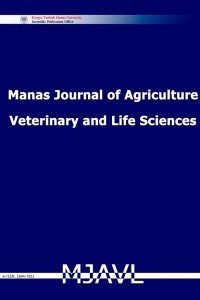
Manas Journal of Agriculture Veterinary and Life Sciences
Yazarlar: Tinatin Döölotkeldieva, Saykal BOBUŞEVA, Maxabat Konurbaeva
Konular:-
Anahtar Kelimeler:Mountain ecosystems,Contaminated and uncontaminated soils,16S rRNA bacterial diversity,Cytochrome P450 alkane hydroxylase genes
Özet: We compared a microbial diversity in uncontaminated and contaminated with petroleum soils in mountain ecosystems in Kyrgyzstan. Culture-dependent and culture - independent methods were used to analyze microbial diversity. PCR primers that target conserved iron binding motifs in alkane monooxygenase (alkB) and cytochrome P450 alkane hydroxylase were used to analyze genes of alkane degrading bacteria in chronically contaminated and uncontaminated sites, using an enrichment culture with dodecane. Analysis of 16S rRNA showed that in contaminated soils BetaProteobacteria phylum populations were abundant. In uncontaminated soil Gammaproteobacteria phylum populations were abundant. The Shannon index (H′) was used to estimate the microdiversity in soils. Diversity was higher in the uncontaminated (H′ = 4,234) than in the contaminated (H′ = 3.632) soil biotopes. These studies have shown that oil contamination affects the structure of local soil microbiota, undermines biodiversity and increases the activity of bacteria involved in hydrocarbon degradation, for example Proteobacteria phylum populations.